 Photo: Ekaterina Bodyagina
Photo: Ekaterina Bodyagina
Graduating Exhibition #26:
Behind the Sun
Graduating Exhibition #26 with students of Eva Bertram, Eva Maria Ocherbauer and Marc Volk
Vernissage: Friday, 13 December 2019, 7pm
Exhibition: 14 December 2019 to 9 February 2020
Gallery Opening Hours: Thursday to Sunday, 1 to 6pm
Extended till 9 February 2020!
Ekaterina Bodyagina, Sebastian Eichelberger, Franziska Feist, Michi Reinhardt und David Zohar
What lies behind the sun: darkness or light? Is it where everything ends or does eternity begin here? Our five graduating students take a symbolic glimpse behind the blazing bright star in the sky and behind the sunny side of life. They explore forgotten and fading stories behind Jewish tombstones and follow the lives of athletes’ who suffered severe injuries. They visualize daily personal compulsiveness, dwell on imposed social boundaries and their effects on the life situations of tabooed couple relationships, and document seemingly impossible ventures in regions that are far too hot. The works take us on a journey exploring the human psyche, climate change, and the process of coping with the past and one’s fate.
Hinter der Sonne Website
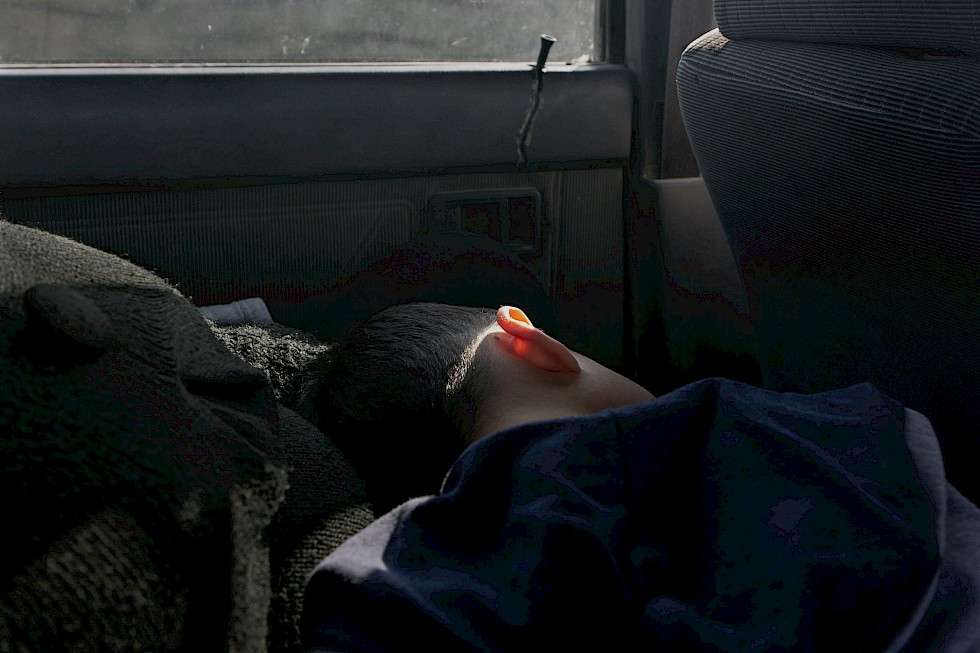 Foto: Ekaterina Bodyagina
Foto: Ekaterina Bodyagina
Taboo. Borders. – Ekaterina Bodyagina
My project “Taboo. Borders.” is devoted to couples with different backgrounds, who live in countries where their relationships are considered taboo. For over two years, I photographed and conducted interviews with Arab-Jewish couples in Israel and Palestine as well as Greek- and Turkish-Cypriot couples on Cyprus. These two regions have one topic in common: individuals who fall in love with someone from across the border face abuse, threats, boycotts, and even violence. The family of a Druze man named Emad did not talk to him for half a year after finding out his Jewish partner was pregnant. Serkan, a Turkish Cypriot, lost his job, because he is married to a Greek Cypriot. Mohammad, a Palestinian Israeli, was beaten up repeatedly by members of the Jewish far-right organisation Lehava for being with a Jewish woman. Hatice, a Turkish woman, tried to commit suicide, because of societal and family pressures from having a relationship with a Greek Cypriot. While listening to people’s stories, I asked myself: what are the physical — let’s say visual — markers of boundaries that separate these couples in the eyes of their communities? This is how the borders part of my project was born. I started to photograph the West Bank barrier that divides Israel and Palestine; fences that separate Jewish settlements on Palestinian territories; cactus barriers surrounding displaced Palestinian villages. I also photographed borders between Israel and its neighbours, when this was relevant to the couples’ stories, as well as the United Nations-controlled buffer zone between the southern and northern parts of Cyprus. I intend to continue this project, telling stories of borders that became taboos or perhaps — about the taboos that became borders. What comes first is a disputable question that forms the core and essence of this work. My intention, however, goes further — to shine a light on the hardships of those who challenge taboos and borders.
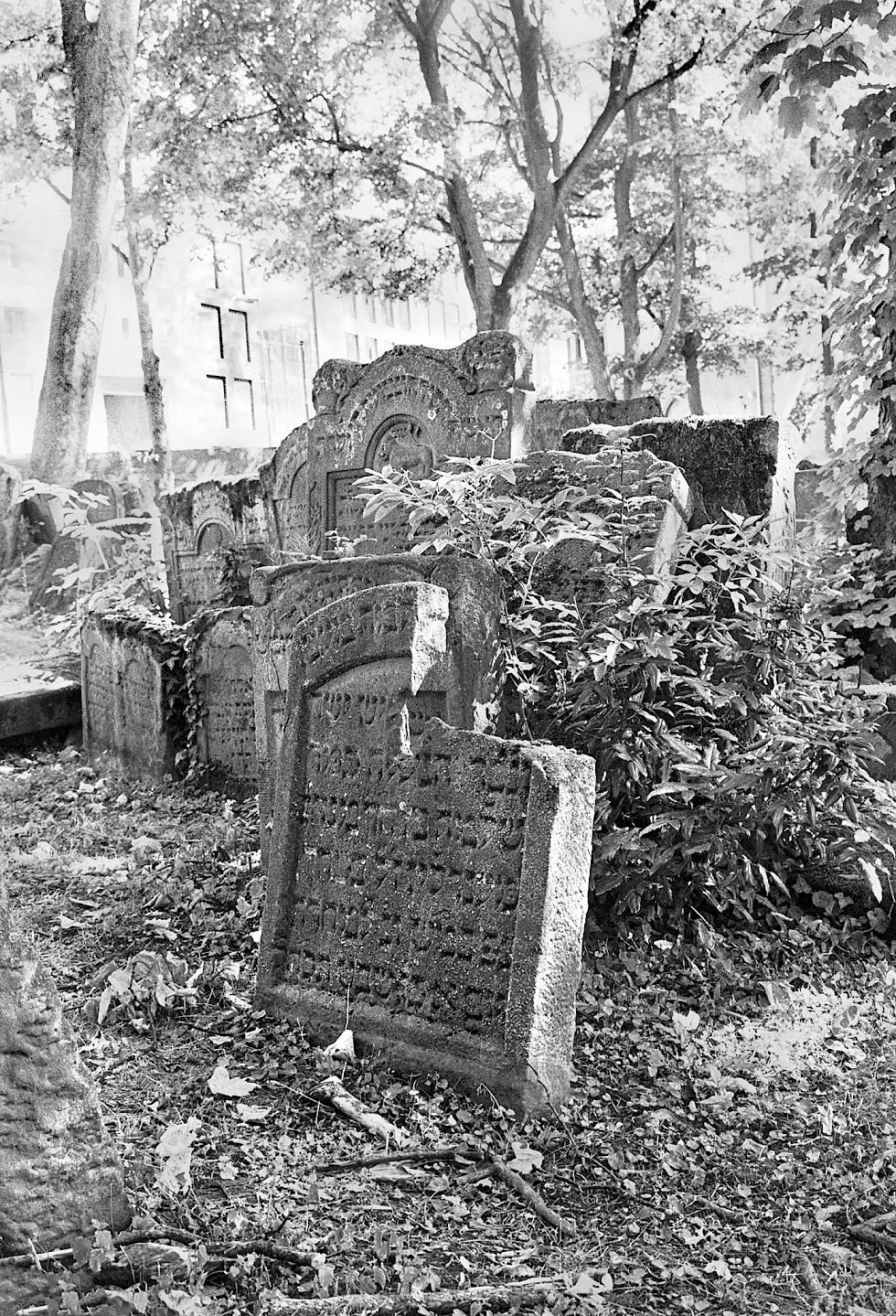 Foto: David Zohar
Foto: David Zohar
Faded Away – David Zohar
Tombstones tell a living history – each embodies its unique characteristic and personal story. Faded Away exhibits historical Jewish cemeteries and the Christian influence on them.
This project, which has developed into an extended archive over time, shows gravestones which I have photographed while travelling throughout Germany. In this context I dedicated myself to these authentic memorial sites, aiming to bring the Jewish history back to life. Some of these places are likely to disappear in the near future. For this reason, but also because of the ever-growing wave of right-wing nationalism, documenting these sites is more relevant than ever before. Thus, these analogue B/W photographs serve as an expressive tool which allows me to combine the past and the present with one another. This project is dedicated to my family and to those who will never be forgotten.
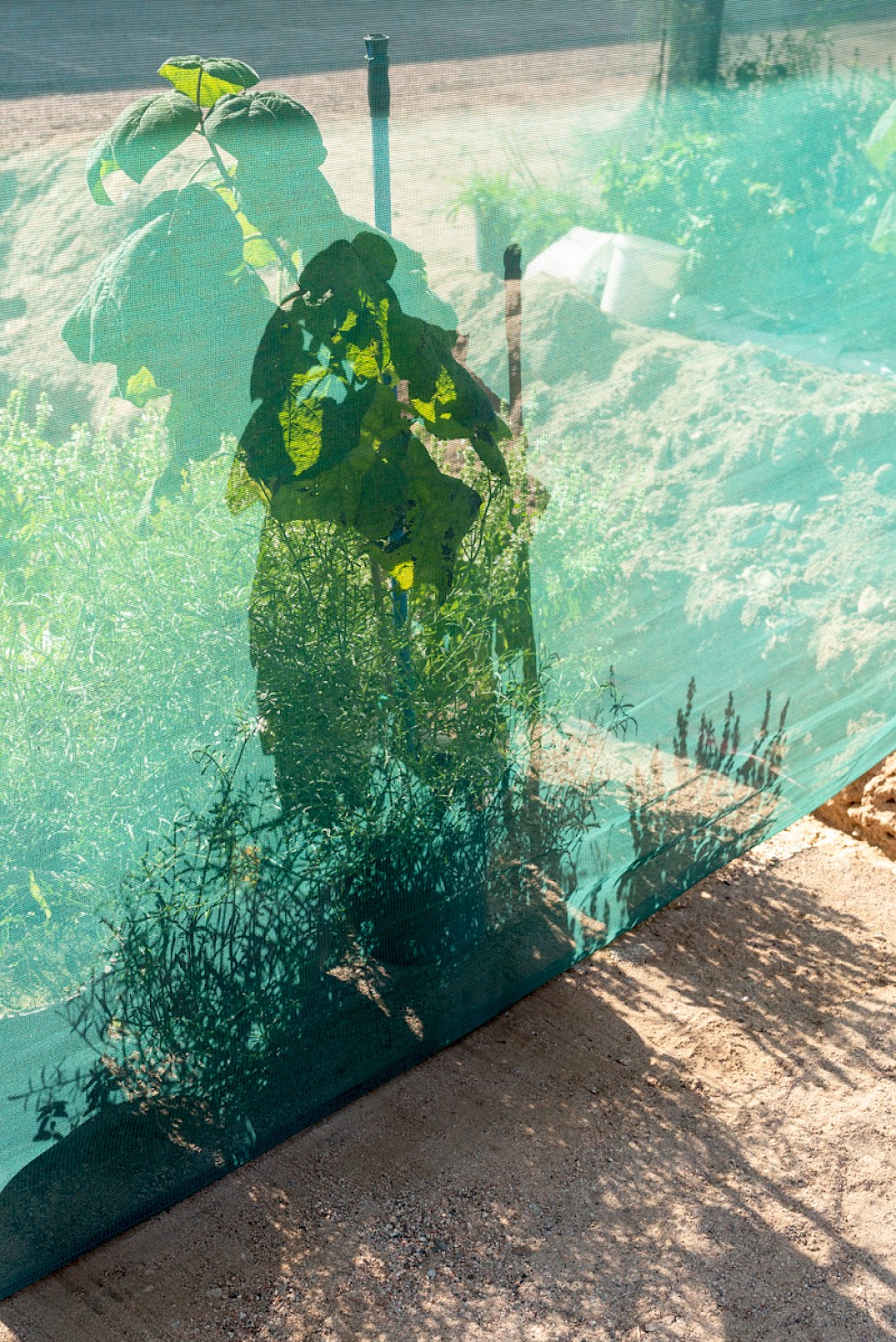 Foto: Sebastian Eichelberger
Foto: Sebastian Eichelberger
WÜSTENWASSER – Sebastian Eichelberger
Für das Fotoprojekt WÜSTENWASSER bin ich mehrmals in die jordanische Hafenstadt Aqaba gereist, um über ein Projekt zu berichten das sich zum Ziel gesetzt hat die Region vor dem Austrocknen zu bewahren. Durch ein ausgeklügeltes Kreislaufsystem wird versucht nachhaltige Landwirtschaft in der Wüste möglich zu machen.
Die Region um die jordanische Hafenstadt Aqaba leidet unter dauerhafter Trockenheit. Es herrscht gleißende Hitze und das ganze Jahr über fallen kaum Niederschläge. Nur 13 Jahre bleiben der Region am Roten Meer laut aktuellen Studien, bis der urzeitliche Grundwasservorrat aufgebraucht sein wird. Die norwegische Stiftung Grieg Foundation hat ein Konzept entwickelt, das gerade getestet wird, und das ich in den vergangenen Monaten fotografisch begleitet habe. Das Sahara Forest Project will die Wüste begrünen und die Bedingungen für eine nachhaltige Landwirtschaft schaffen. Gewächshäuser entstehen mitten in der Wüste, die Solarenergie, Entsalzungsanlagen und Verdunstungskälte kombinieren, um Kirschtomaten, Snackgurken und Salat anzupflanzen.
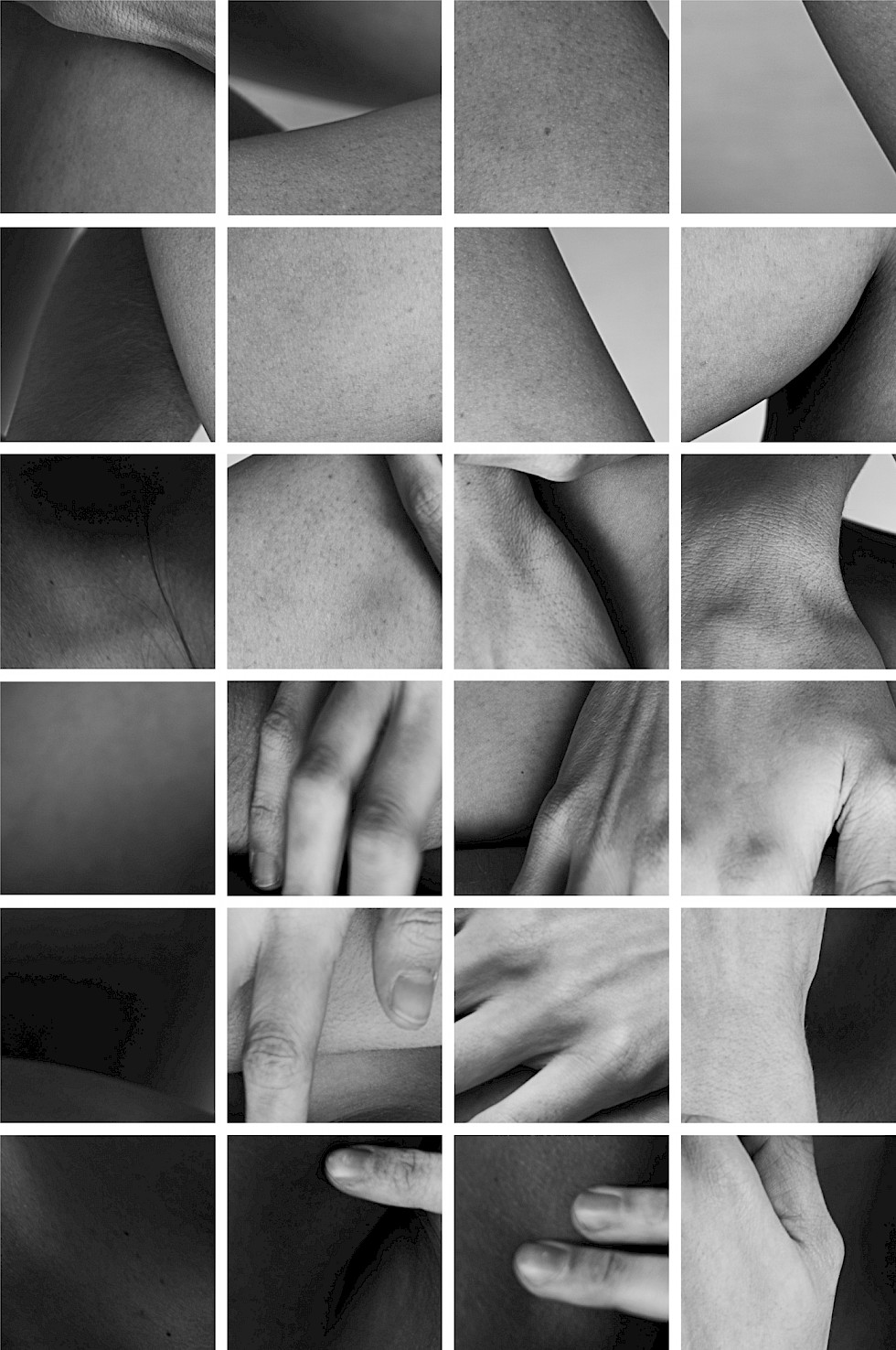 Foto: Franziska Feist
Foto: Franziska Feist
24 – Franziska Feist
24 Stunden spiele ich. Ein Spiel, dessen Regeln sich aus dem Nichts ergaben. Von unsichtbarer Hand gezwungen, zähle ich bis vier.
Die Arbeit „24“ zeigt eine Reihe von Selbstportraits, die sich zunächst nicht als solche offenbaren. Vielmehr scheinen es abstrakte Darstellungen eines Selbst, welches erst aus dem Inneren enträtselt werden kann. Jedes Bild besteht aus 24 scheinbar willkürlich zusammengesetzten Quadraten einer Fotografie, die jedoch nach individuellen Regelsystemen arrangiert wurden. Diese Regeln zum Aufbau des Bildes sind vielfältig und übersetzen eigene persönliche Handlungsweisen (ich neige beispielsweise dazu Lebensmittel nur in geraden Anzahlen zu konsumieren) in eine Bildkomposition. Mein innerer Drang nach Ausgeglichenheit und der Zwang Alltägliches in geraden Zahlen zu zerlegen, lässt auch im Bild aus Fragmenten etwas Ganzes entstehen. Die Ambivalenz des Chaos und der Ordnung in den Arbeiten spiegelt so den Zustand eines Lebens wieder, welches sich zugleich unter Kontrolle befindet als auch von absurden Regeln kontrolliert wird.
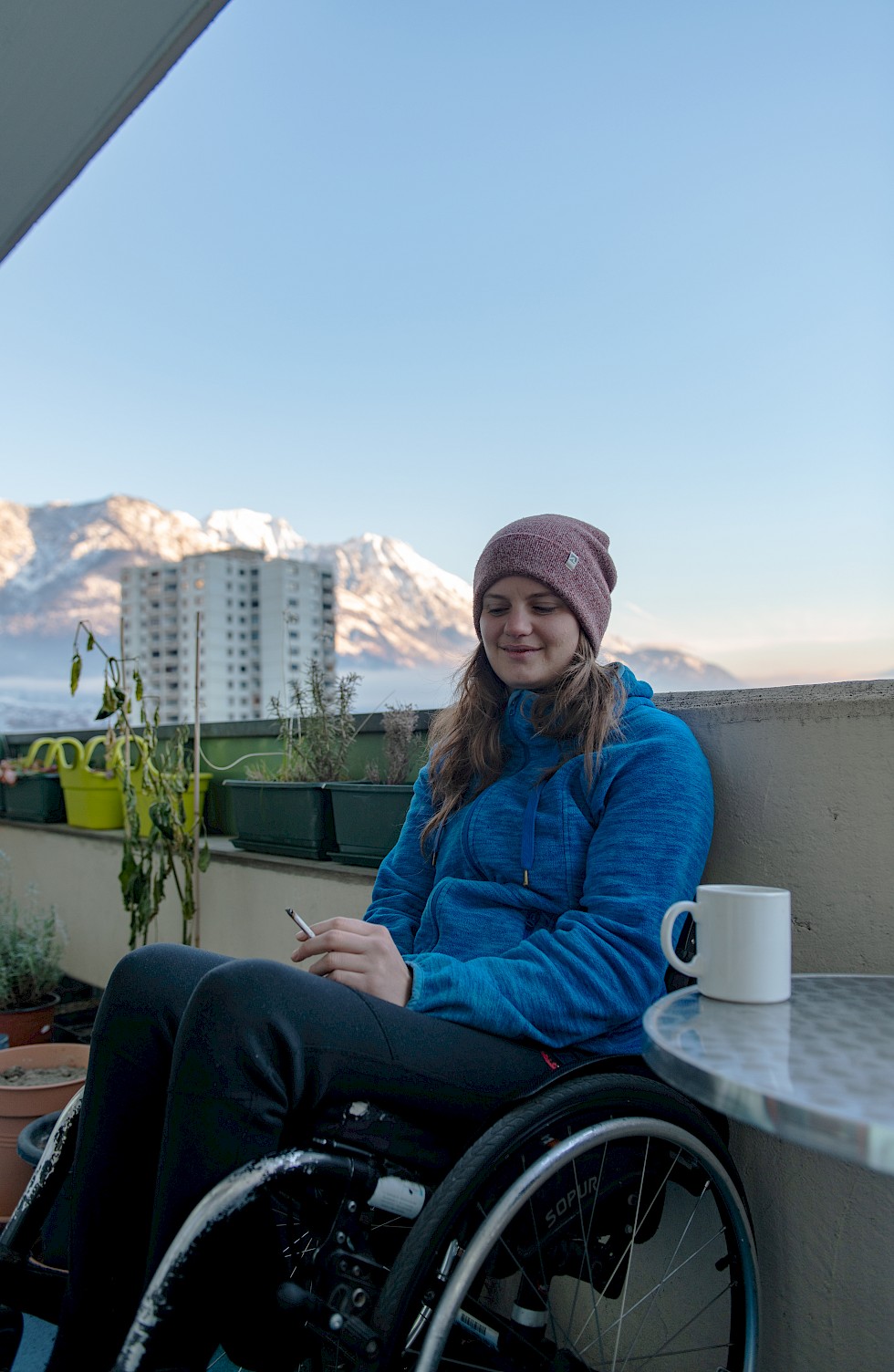 Foto: Michi Reinhardt
Foto: Michi Reinhardt
Fatum – Michi Reinhardt
Dieses Fotoprojekt befasst sich mit mehreren Extremsportathleten, die trotz ihrer abgeheilten, lebensverändernden Verletzungen ihre Vitatliät nicht verloren haben und mit neu gewonnener Energie wieder ins Leben zurückgekehrt sind.
Mit diesen Bildern soll darüber hinaus gezeigt werden, was es bedeutet, einen schweren Schicksalsschlag zu erleiden, und wie sich die Betroffenen individuell bemühen, Probleme und Ängste während eines langwierigen Genesungsprozesses zu meistern. Um die Verletzten so ehrlich und unmittelbar wie möglich zu zeigen, wurden sie in ihrem persönlichen Umfeld, in ihrer privaten Umgebung oder beim Sport gezeigt. Ziel dieser Arbeit ist es, so hoffe ich, Menschen, die sich in ähnlichen Umständen befinden, wieder Hoffnung zu geben.
Tile Image: Michi Reinhardt




 Photo: Ekaterina Bodyagina
Photo: Ekaterina Bodyagina Foto: Ekaterina Bodyagina
Foto: Ekaterina Bodyagina Foto: David Zohar
Foto: David Zohar Foto: Sebastian Eichelberger
Foto: Sebastian Eichelberger Foto: Franziska Feist
Foto: Franziska Feist Foto: Michi Reinhardt
Foto: Michi Reinhardt